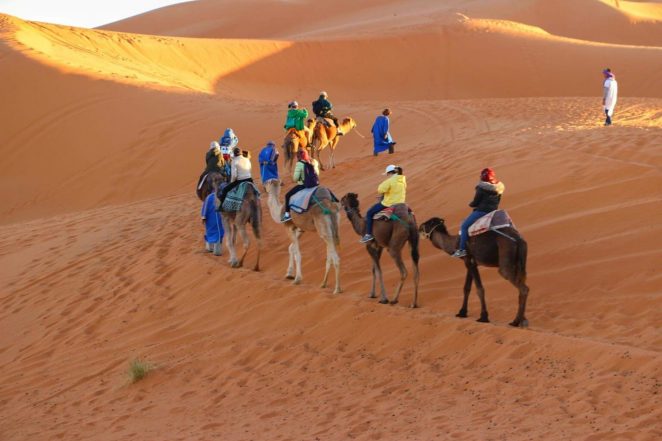Berber Life in the Tunisian Sahara :Desert Holidays And Discovery
A tour of the Sahara desert in Tunisia is the perfect way to learn about Berber heritage and explore the landscape. Douz, a desert Oasis town is known as the gateway to the Sahara and a traditional meeting place for Berber tribesmen. Here, camel rides can be enjoyed amongst the silver dunes whilst at Matmata there are the famous Berber troglodyte cave houses to explore.
Desert Camel Rides in Douz
Known as the gateway of the Sahara, Douz is an oasis of 800,000 date palms. The town is surrounded by desert dunes which often try and encroach upon it. The locals keep them in place with judiciously planted trees or man-made barriers.
For centuries, Douz was a meeting place for nomadic M’razig Berber tribesmen. Today, it is known for its dates and palm wine but most of its income comes from tourism. The local tribesmen offer accompanied camel rides a short distance into the bleached sands of the Sahara.
This does not mean that Douz has forgotten its desert traditions. The annual festival of the Sahara which occurs for 3 days each Christmas and New Year is a celebration of camel rides, races, and fights as well as traditional Bedouin handicrafts and jewelry.

The Troglodyte Houses of Matmata
About 100km east of Douz is the Berber settlement of Matmata. Situated in an arid desert landscape of scrubland and hills, the settlement is famous for a very particular kind of traditional Berber housing. For Matmata is known for the pit like cave dwellings that give the settlement its name and can be found nowhere else in Tunisia.
These cave houses or troglodyte houses as they are also known seem to grow out of the very landscape. Often invisible from the outside, some believe they developed as shelters from enemies. It is more likely that were shelters against the conditions of the desert. Troglodyte cave dwellings offer much needed cooling shade in the daytime whilst insulating their inhabitants against the cold desert nights.

})(jQuery);


